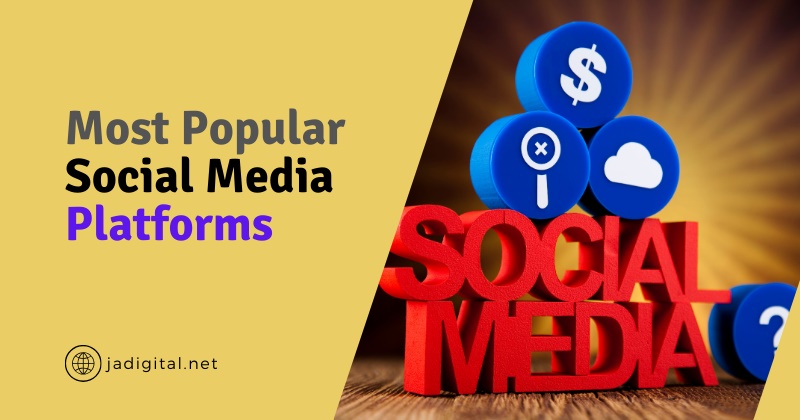In 2024, social media continues to dominate as an integral part of daily life, influencing how we communicate, entertain ourselves, and conduct business. With rapid technological advancements, these platforms are not only growing their user bases but also introducing innovative features that redefine digital engagement.
Here, we explore the top 10 most popular social media platforms of 2024, ranked based on user numbers, engagement, and cultural relevance.
Criteria for Ranking
To identify the top platforms, we considered:
- User Base: Number of active monthly users.
- Engagement: Average time spent per user.
- Features: Innovative functionalities introduced in 2024.
- Demographics: Global reach and target audience.
- Revenue Model: Monetization strategies for sustainability.
Top 10 Most Popular Social Media Platforms
1. Facebook (Meta)
- Active Users: Over 3 billion monthly active users.
- Key Features: Facebook remains a giant by integrating advanced AI-driven content suggestions and community engagement tools. Its 2024 update includes enhanced virtual reality (VR) spaces via Meta Horizon, aligning with the metaverse vision.
- Trends: Despite competition, Facebook’s diverse user base ensures its continued dominance, especially in regions like Southeast Asia and Africa.
2. YouTube
- Active Users: 2.9 billion monthly active users.
- Key Features: YouTube’s strength lies in its versatility—short-form videos via YouTube Shorts compete with TikTok, while its long-form content maintains creator loyalty. Enhanced monetization options for Shorts have driven more creators to the platform.
- Trends: Live streaming and educational content are key growth areas, solidifying YouTube’s position as a go-to for both entertainment and learning.
3. Instagram
- Active Users: 2.5 billion monthly active users.
- Key Features: Instagram’s visual appeal remains strong. In 2024, the platform introduced AI-driven AR filters and expanded its shopping features, making it a hub for influencers and e-commerce.
- Trends: Stories and Reels continue to attract younger audiences, while in-app shopping sees substantial growth.
4. TikTok
- Active Users: 2.2 billion monthly active users.
- Key Features: TikTok’s dominance in short-form video content remains unchallenged. In 2024, it launched innovative editing tools and enhanced AI algorithms for hyper-personalized content feeds.
- Trends: Viral challenges and creator monetization options keep TikTok culturally relevant, especially among Gen Z and Millennials.
5. Twitter (X)
- Active Users: 400 million monthly active users.
- Key Features: Now rebranded as “X,” the platform focuses on combining microblogging with financial tools and long-form content. Its subscription model, X Premium, offers ad-free browsing and exclusive features.
- Trends: Real-time news and discussions remain its strength, while Elon Musk’s updates aim to make it an “everything app.”
6. LinkedIn
- Active Users: 950 million monthly active users.
- Key Features: LinkedIn’s professional focus is stronger than ever, with robust job search tools, AI-driven skill assessments, and community-building features tailored for career growth.
- Trends: The platform’s learning modules and focus on industry-specific networking make it indispensable for professionals worldwide.
7. WhatsApp
- Active Users: 2.7 billion monthly active users.
- Key Features: Although primarily a messaging app, WhatsApp’s “Communities” feature has enhanced its social media appeal. In 2024, WhatsApp Business saw significant adoption among small and medium enterprises.
- Trends: End-to-end encryption and user-friendly interfaces make it a favorite for personal and professional communication.
8. Snapchat
- Active Users: 600 million monthly active users.
- Key Features: Snapchat’s appeal lies in its ephemeral content and AR-driven features. In 2024, it introduced new creator monetization tools and expanded AR shopping capabilities.
- Trends: Popular among Gen Z, Snapchat thrives on casual, visually engaging interactions.
9. Pinterest
- Active Users: 465 million monthly active users.
- Key Features: Pinterest excels in niche content, from DIY projects to lifestyle inspiration. It expanded its shoppable pins and introduced AI-driven content suggestions in 2024.
- Trends: The platform’s unique blend of inspiration and e-commerce integration keeps it relevant, especially among creative communities.
10. Reddit
- Active Users: 430 million monthly active users.
- Key Features: Reddit’s strength lies in its community-driven content. In 2024, it improved user experience with AI moderation tools and introduced premium membership tiers.
- Trends: Its role as a forum for niche topics and real-time discussions ensures its continued appeal.
Honorable Mentions
- BeReal: Gained traction for its focus on authentic, unfiltered content.
- Mastodon: A decentralized social platform that’s growing among privacy-conscious users.
- Discord: Popular for its community-building tools, particularly among gamers and hobbyist groups.
Trends to Watch in 2024
1. AI Integration
Social media platforms are leveraging AI to enhance user experiences. From personalized content feeds to advanced chatbots for customer service, AI is transforming digital engagement.
2. Creator Monetization
Platforms are introducing new ways for creators to earn, including subscriptions, virtual tipping, and ad revenue sharing, fostering a sustainable creator economy.
3. Short-Form Content
TikTok’s success has pushed other platforms to prioritize short-form video, making it the dominant format in 2024.
4. Privacy and Regulation
With growing concerns over data privacy, platforms are implementing stricter controls and transparent policies to build trust with users.
5. Virtual and Augmented Reality
AR and VR technologies are redefining how users interact with content, making social media more immersive.
Conclusion
Social media in 2024 is defined by innovation and adaptability. These platforms continue to shape our digital landscape, influencing how we connect, share, and create. As we look to the future, the integration of AI, focus on user privacy, and evolving content formats will undoubtedly keep reshaping this dynamic space. Which of these platforms do you think will dominate in 2025? Share your thoughts below!
